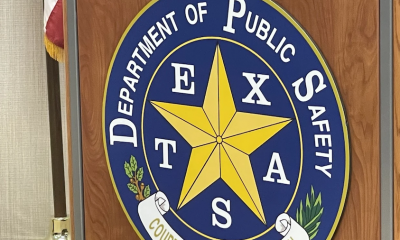U.S. News
Plano Community Advocate Pamela Ziegler-Petty on Advocacy and DFW’s Black Business Community

PLANO, TX – It’s difficult to find anyone in Plano’s art or advocacy circles who doesn’t know Pamela Ziegler-Petty. A former president of the ArtCentre of Plano and a senior vice president of business banking with Capital One, she’s known for her work as a community advocate through organizing art exhibitions, speaking engagements, and through her tireless work to build a network of like-minded people for the betterment of all.
Pamela’s true passion is advocacy. She has dedicated much of her life toward advancing the community, with a particular focus on promoting local arts as well as diversity and inclusion.
As part of our Local Leaders series, Local Profile spoke to Pamela about her life of service, the importance of diversity in business—and in life—and the challenges facing the Black community.
What makes you so passionate about playing an active role in the community?
“Passion has always been with me because I have been actively involved in community work since I was a little girl. Growing up, I lived in a neighborhood that was very active. I remember meeting my first politician in first grade at a neighbor’s home, hosting a meet and greet. Many of the moms/dads were running for office, championing a social cause, or advocating for better schools, justice, and equality. I was afforded a chance to become engaged. It was a way to have fun, while providing service to those in need. It’s something that has never escaped me.
“Additionally, I’ve grown to learn more about my family history and realized that my activism has been embedded in my lineage. I have always believed that it’s important to serve in communities where I work and live! Some of my greatest rewards have come from assisting families or individuals who needed just a small boost to make it in life. Also, working on projects such as Junior Achievement, developing a nonprofit entrepreneurship program and creating viable, innovative programming for institutions, and working with small businesses has solidified my commitment to our communities. It’s so important to support our businesses and nonprofits—good for our economy.”
As a Black woman, presumably, you are often in the minority when it comes to nonprofit boards and other community organizations? Why is diversity important?
“Diversity, inclusion, and belonging (DIB) is the right thing to do and it’s best for business. I’m fortunate to work for Capital One, where DIB matters deeply. Our North Star is about belonging—everyone feeling safe, seen, heard, valued, and able to thrive as their best, most authentic selves. I’ve always believed that God has a purpose for each of us and that it is my responsibility to ‘leave the door open and the ladder down.’ I proudly pull up additional chairs at the table if afforded the opportunity. It’s a beautiful thing to leverage openings for others.
“As you and I both heard and understand, if there’s not a seat at the table, you can make your own, or, bring folding chairs for others.”
As someone who has led the way, what advice would you give to someone who wants to get more involved, but struggling to do so?
“I believe that ‘we are our brothers’ keeper’ which simply means that it is our personal responsibility to assist others when they are in need if we can, and it makes sense. My first piece of advice is simple—if assisted, the person must be open to listening to another person’s opinion and willing to see things from a different lens. Secondly, I share that once you’ve been assisted, you must commit to bringing another person along. It is no benefit to anyone or any organization to selfishly vie for accomplishments if you don’t acknowledge that it’s not about YOU. The best way to show that is by giving back to another person, to build viable ‘pipelines.’
“If you work for a corporation, seek out Employee Resource Groups—there are outstanding options to find organizations that mirror your personal interest. Everything in life worth having often comes with a bit of effort and it’s simply to make your toolkit much stronger. Most importantly, recognize your time commitment and set aside a schedule that allows you to get involved and remain consistent.”
What can boards and leaders of organizations do to attract more diverse community involvement? What have you done? What works?
“I’ve found over the years that oftentimes boards and leaders may not be adequately equipped to attract diverse community involvement. However, it’s easy to leverage and find diverse participation … if truly desired. There is an old saying: it must start at the top, which is the concept I model. If leadership is ready to embark on a journey to raise awareness to increase participation, that’s all it takes.
“I’ve personally looked at the scale of the request and then found ways to mitigate and alleviate gaps. Additionally, I have decided that my leadership requires me to have effective connections with others at all times to make great recommendations.
“Also, leaders must acknowledge that a change of thought is necessary to attract diverse talent. Sometimes it requires that the way things have always been done may take a back seat to a newer, fresh approach that is attractive to the target market. Leading with enthusiasm, an open mind, and thirst for accomplished individuals is paramount to the process.
“I use art as an avenue to merge souls and minds. To do this, I organized Black art exhibitions, such as the world-renowned Kinsey family collection to raise awareness and generate revenue for a beloved nonprofit. It’s so much fun to work with your team to bring a new fresh experience.”
Right now, in our community, what do you feel is the biggest challenge for our Black community? What can we do as a community to change that?
“There are systemic challenges in our community that have been around since the beginning of time—we’ve made strides and are moving forward. My community utilizes hope as a platform at all times based on our history. I believe that change led by communities in an effective way requires … being receptive, open, and curious about our journey. Curious in a way to improve our challenges—not for exploitation purposes. Champions of all races have PAUSED to understand systemic issues in our community and begun to ask, ‘What can I do to help?’
“Communities of color are not looking for a handout. We want justice, opportunity, and the ability to stand shoulder to shoulder with others. Recently, Capital One pledged $10 million to organizations advancing the cause of social justice for Black communities. This builds on our recent commitment of $50 million to support long-standing non-profit partners struggling to pursue their core missions in the face of the COVID-19 pandemic, including many organizations dedicated to meeting the most pressing needs of the Black community. Together, our community of businesses, nonprofits, and civic and community leaders can work to make this region where we live and work even more vibrant. We need all voices on this journey because one community simply can’t do it alone. Find a cause that you can identify with, research it, reach out and then become engaged.
“It’s simple. Take the first step and we will meet you on the next one.”










